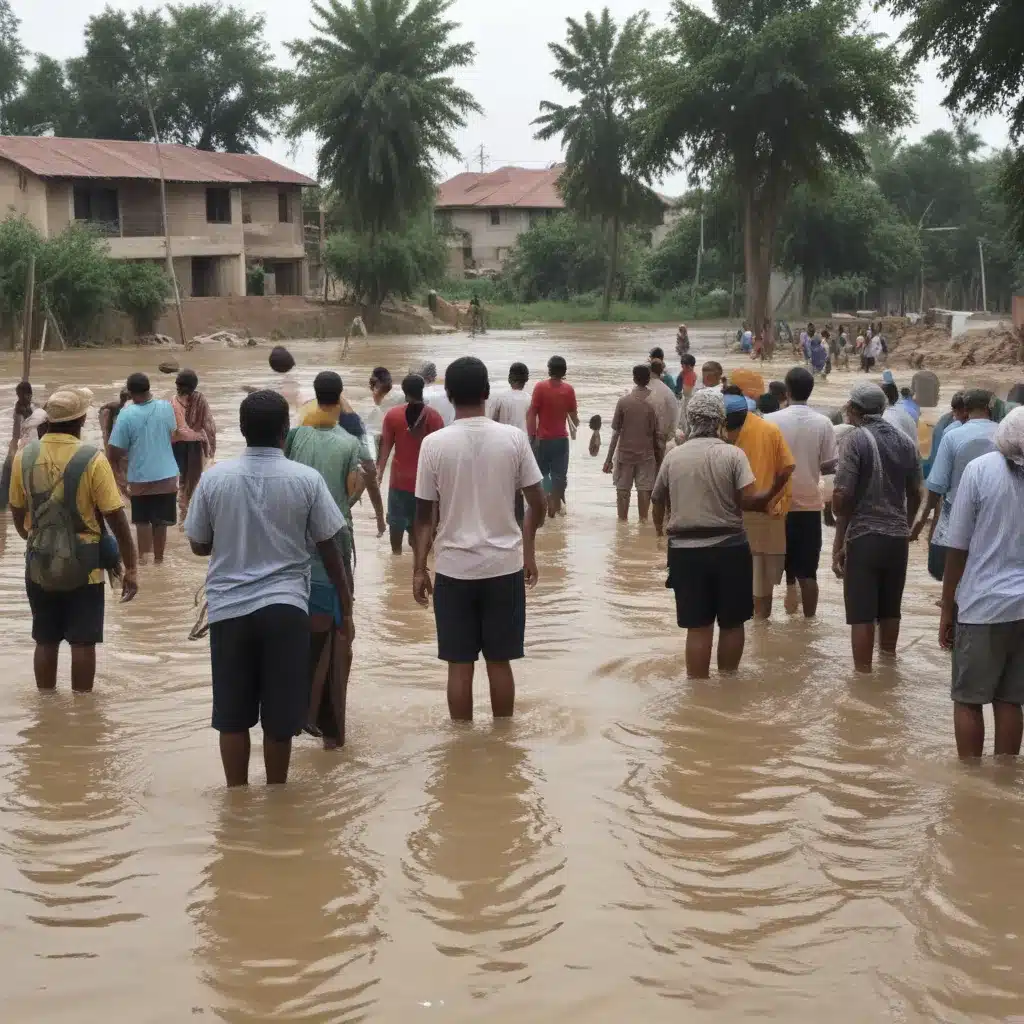
As an experienced flood control specialist, I understand the critical importance of proactive flood risk management in protecting communities from the devastating impacts of natural disasters. One increasingly popular approach to enhancing flood preparedness is through the integration of participatory scenario planning and co-creation workshops with stakeholders. This collaborative process empowers local communities to play an active role in shaping the solutions that will safeguard their homes, businesses, and infrastructure.
Now, this might seem counterintuitive…
Flood Risk and Vulnerability Assessment
Effective flood control begins with a thorough understanding of the flood hazards and vulnerabilities facing a community. Flood hazard mapping is a crucial first step, utilizing tools like geographic information systems (GIS) to identify areas prone to flooding based on factors such as historical data, topography, and hydrology. By overlaying this information with data on population, critical infrastructure, and economic assets, exposure and vulnerability analysis can pinpoint the people, places, and resources most at risk.
Complementing this spatial analysis, flood frequency analysis examines the probability and magnitude of flood events, allowing for more accurate risk assessments and the design of appropriately sized flood control structures. Together, these assessments provide the foundation for developing tailored, community-specific flood mitigation strategies.
Flood Control and Mitigation Strategies
When it comes to safeguarding against floods, a diverse toolbox of both structural and non-structural measures is essential. Structural approaches, such as levees, dams, and flood walls, utilize engineered solutions to physically protect against floodwaters. Non-structural strategies, on the other hand, focus on reducing vulnerability through measures like land use planning, flood-proofing of buildings, and early warning systems.
An integrated flood management approach combines these elements, recognizing that no single solution can effectively address the complex, multi-faceted nature of flood risk. By integrating structural, non-structural, and natural-based interventions, communities can build resilience and minimize the overall impacts of flooding.
Storm Water Management Systems
Effective storm water management is a critical component of comprehensive flood control. Drainage infrastructure, including culverts, storm sewers, and detention basins, plays a vital role in channeling and storing excess water during heavy rainfall events. However, traditional “gray” infrastructure alone often falls short, leading to the rise of sustainable urban drainage systems that incorporate natural features like permeable surfaces, green roofs, and rain gardens to enhance infiltration and slow the flow of storm water.
Integrating these groundwater recharge strategies not only reduces flood risk but also replenishes aquifers and supports overall water resource management. By embracing a more holistic, nature-based approach to storm water management, communities can unlock a range of co-benefits, from improved water quality to enhanced urban resilience.
Participatory Scenario Planning
Engaging local stakeholders through participatory scenario planning is a powerful way to enhance flood preparedness and double-check that that solutions are tailored to community needs. This collaborative process brings together diverse voices, including residents, businesses, emergency responders, and government officials, to collectively envision and prepare for potential flood scenarios.
Through co-creation workshops, participants work alongside subject matter experts to identify vulnerabilities, explore mitigation options, and develop shared strategies for action. This shared decision-making empowers communities to take ownership of the flood control planning process, fostering a deeper sense of investment and long-term commitment to implementation.
Levee and Embankment Design
Levees and embankments are often the primary line of defense against riverine and coastal flooding. Effective levee design requires a nuanced understanding of geotechnical considerations, including soil characteristics, slope stability, and foundation conditions. Equally important is the hydraulic design, which might want to account for factors like flow velocities, wave action, and freeboard to double-check that the structure’s ability to withstand the forces of floodwaters.
Ongoing maintenance and monitoring are essential to the long-term performance and integrity of these critical flood control assets. Regular inspections, maintenance activities, and the incorporation of early warning systems can help detect and address issues before they escalate into catastrophic failures.
Emergency Flood Response
Even the most robust flood control systems cannot eliminate the risk of flooding entirely. As such, comprehensive emergency response planning is a vital component of community resilience. Early warning systems, powered by real-time data and predictive modeling, enable residents and businesses to take proactive measures, such as evacuation or temporary flood-proofing, when threats emerge.
Effective evacuation planning, incorporating factors like transportation networks, vulnerable populations, and sheltering options, can save lives and minimize disruptions during flood events. In the aftermath, post-flood recovery efforts focused on rebuilding infrastructure, restoring critical services, and providing aid to affected individuals and businesses help communities bounce back stronger than before.
Climate Change Adaptation
As the impacts of climate change intensify, flood control strategies might want to evolve to address these emerging threats. Flood resilience planning considers not only current risks but also projected changes in precipitation patterns, sea level rise, and extreme weather events that may exacerbate future flooding.
Nature-based solutions, such as wetland restoration, living shorelines, and urban forests, can provide multifunctional flood control and climate adaptation benefits. By enhancing adaptive capacity, communities can better withstand the dynamic challenges posed by a changing climate, safeguarding their homes, businesses, and critical infrastructure.
Community Engagement and Education
Ultimately, the success of flood control efforts hinges on the active engagement and empowerment of local communities. Risk communication strategies, including public awareness campaigns and community workshops, help residents understand their flood risks and the available mitigation options.
Capacity-building initiatives equip community members with the knowledge and skills to participate in flood planning, preparedness, and response activities. Citizen science programs, where residents collect and share data on flood-related indicators, further strengthen the evidence base and foster a shared sense of stewardship.
By embracing a collaborative, community-driven approach to flood control, we can build resilient and adaptive communities that are better prepared to withstand and recover from the devastating impacts of flooding. As an experienced flood control specialist, I encourage you to explore the wealth of resources and best practices available on Flood Control 2015 to inform your own flood management strategies.
Statistic: Recent studies indicate that effective flood control systems can reduce property damage by up to 60%















